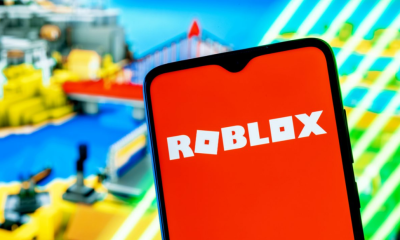Gaming
Are freemium games the future?
Mobile gaming is one the world’s biggest growth industries. Users can’t seem to download enough games to their devices.
Worldwide, around 80 billion games are being downloaded a year. And that figure is rising all the time. Most American mobile users now play a game at least once a week.
Of course, gamers choose all sorts of games to play and like to have a big choice. Check out this selection of online slots, there are games fitting every niche, meaning the majority of gamers are likely to find something which interests them. The big appeal of slot games is that they are free to trail, so the player can get to grips with the games before they try for real money.
And this is a crucial factor in today’s gaming marketplace. Despite that huge boom in players and the numbers of games they download – most pay hardly anything for their games.
The key appeal for players seems to be that the initial game is free. This system has become known as the freemium model.
Of course, the operators behind the games have to make money to fund their business. The way they do that has changed. They don’t rely on selling the original game – they concentrate on in-game purchases once the user becomes a fan.
The secret to freemium games is that once the player starts enjoying the game – they will then want to unlock new levels, capabilities and personalise the game. And most users are prepared to pay for those options.
Research shows that among regular mobile gamers around half are happy to spend to up-rate their game once they’ve become a fan. The majority are spending around $20 a month.
That’s why the freemium system works for users and operators. By lowering any barriers to entry, more and more people are likely to download the game and start playing. It’s the best way to expand the audience.
Once the players become hooked on a game, they are happy to pay to enhance the experience. This can involve all sorts of in-game purchases, from a virtual currency to use in the game to extra functions to play the game, like more powerful tools.
The system of capturing the audience and then making money from their enthusiasm is working so well that other business are looking at it. Streaming video providers for example are considering how they could use a freemium system to attract more users.
Video streamers could access content for free in this freemium system and then pay to up-grade the experience. This could mean for example getting premium content or better services. They could even add games to their content.
The streaming market is clearly looking at the games market with relish. That’s because games are now the single biggest category of apps. They take up more than 20% of the Apple App Store and form around a third of downloads.
There now seem to be players everywhere that are completely engrossed in games like Bubble Witch Saga or Temple Run. They may be free to join but are anything but free in the long run.
Since in-app purchases became common in iOS in 2009, more and more revenue has come from this direction. It caught experts by surprise but the free games now make far more profit than paid-for games.
Latest figures show that in the top 400 apps on Google Play, only around 40% are games. But these game apps produce 92% of the total revenue. And almost all that revenue comes, not from initial purchase price, but from in-app spending.
There are big differences between these in-app purchases of course. Many players make tiny upgrades costing a few dollars. A few, however, spend big. Around one in ten make regular in-app spends of $50 or more. It’s these players who contribute around half the profit of the games.
These big-spending players are considered today’s mobile equivalent of the heavy staking gamblers of casinos that are nicknamed big fish or whales.
It means that freemium games designers don’t have to bring in everyone who sees the game. They only really need to attract just the big fans who are prepared to pay big money to enhance their game.
Game developers are working hard to find the users who are prepared to spend $50 to add to the experience a game that was initially completely free. They often use advanced psychology to attract and entertain users.
Completely predictable games are not entertaining so they try to add variations like unexpected big prizes. They are trying to use the same motivation that keeps players sitting at a physical slot machine for hours.
Does the freemium system work? You only have to look at the way the big mobile game operators are planning their products now to see that it does.
It seems that fewer and fewer paid-for games will be produced – figures show that they actually make less money in the long term.
How much money are we talking about with these free games? It’s much bigger than many outsiders think. The makers of games like Candy Crush Saga are making billions of dollars a year.
In fact, the top few mobile games combined are making tens of billions a year. Experts are calling it the future of gaming. Enthusiastic players become virtual addicts. The key however is that the first hit is always free.
-

 Technology4 years ago
Technology4 years agoHow to Track Someone Location with Phone Number
-

 News3 years ago
News3 years agoRoblox users above the age of 13 will be able to import contacts and be suggested new pals
-

 Call Of Duty7 years ago
Call Of Duty7 years agoCall of Duty: Black Ops 4 Update Crashes On Xbox One
-

 Gaming3 years ago
Gaming3 years agoHow to Enable 2FA In Fornite












